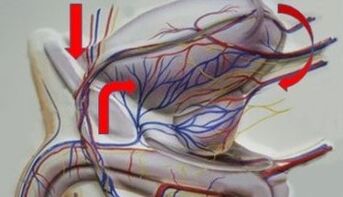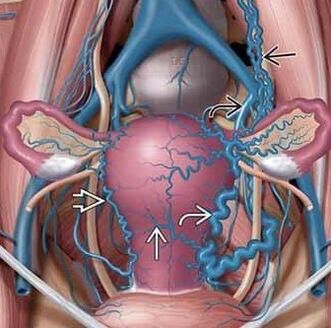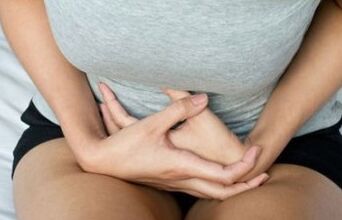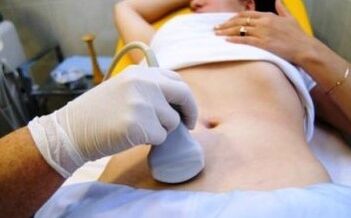The varicose veins of the pelvis (WRMW) or chronic pelvic pain syndrome are still an exotic disease with blurred diagnostic limits for many doctors.
This explains the fact that some doctors "do not notice" this disease for their patients for a long time, while others make this diagnosis of almost every second person suffering from constant unexplained pain in the lower abdomen.
In the meantime, the quality of the patient's worse life, his ability to enjoy the intimate side of relationships with a loved one, and the ability to continue his family depends to a large extent on the timely detection of varicose veins depends to a large extent.
The phenomenon of chronic pelvic pain has been known to doctors for a long time. But only relatively recently it has become a well -known most likely cause - varicose veins of the pelvis. This is a diseaseIt was first described in 1975.And it's still not well studied well. This pathology is most likely to develop according to the following algorithm: Symptoms of varicose veins (varicose veins) of the veins of the pelvis of the pelvis are much more common in women of reproductive age than in men. At the same time, ovarian ("ovaries") veins most often suffer - in 85% of cases. The leading symptom is the pain that is recorded in more than 90% of patientsSBut the spread of this disease among the population has not yet been clarified: according to various studies it is 6 to 80%. Such a big running in the "testimony" is explained only by the insufficient qualification of the diagnostic doctors in diagnosis. The causes of pelvic varicose veins are any changes in the body that can provoke the start of the pathological mechanism of this disease: High risk factors VRVMT are: In the medical environment, the conditional separation of VRVMT is accepted by the nature of the course into varicose veins of the crotch and external genitals (such as pubic lips) and venous knit syndrome. This classification is not very practical becauseIn most cases patients have both formsAt the same time, as provoking each other. You can also find a classification of the disease through the root cause of its appearance. In this regard, VRVMT is divided into: This type of vascular pathologycannot be called a deadly diseaseSFound in time, it lends itself well to the medical correction. But the whole problem is that finding it is not so simple. The insufficient knowledge of the disease and the low awareness of most diagnostic doctors play a role in this. So it turns out that patients have been suffering from this disease for years without even suspecting it. And in their body, in the meantimeThere are a number of irreversible changes: According to US researchers, in the early 2000s, only 2% of VRVMT patients initially made the correct diagnosis. Sometimes the consequence of a diagnostic error is the removal of the organs of the detergents in women, although this can be avoided if usedThe most accurate methods of diagnosing pelvic varicose veins: It is almost impossible to completely cure varicose veins of the pelvis without surgery. With the help of conservative medicineYou can greatly facilitate and even eliminate most unpleasant symptomsAnd they significantly reduce the risk of complications of the disease. The operation also does not give a hundred percent guarantee that the disease will not return. To prevent recurrence of the diseaseYou always need to stick to an "anti -resolved" lifestyle: Pelvic varicose veins -This is a hidden scourge of women's health, a type of ghostly illness, which is difficult to find, but to suffer from it is quite real. The main symptom of the disease is chronic pelvic pain, which can torment the patient for a long time and become a source of abandonment of many joys of life. You cannot withstand such discomfort and you cannot see a doctor! When specific symptoms occur, you should clearly understand that it is abnormal and immediately seek the help of a specialist. On such a matter as the treatment of varicose veins of the pelvis, the base consists in the correction of its diet. For starters, women with VRVMT need to learn that even Detralex will not have due efficiency unless they refuse to work in harmful production. If there is such an opportunity, it is better to switch to a lighter job -except for excessive physical activity, weight lifting. If you have to sit or stand for a long time during a working day, organize yourself 5-minute breaks every half hour. At this time you can just walk or go to bed, or you can do therapeutic gymnastics. Treatment with high quality treatment of varicose veins is also not possible without changes in diet. From the diet you need to completely remove fats and fried foods, smoked foods and conservation. Use as many citrus fruits as possible, try to use spices less often when cooking. Add more natural products to your daily menu - fruits and vegetables. Instead of animal fats, use vegetables - they contain a large amount of vitamins from B. With the painful enlargement of the pelvic veins, it is necessary to wear special compression linen. We are talking about tights or socks that contribute to the normalization of blood circulation in the vessels and also eliminate the stagnation of the fluid in the veins. In addition to everything above, women with VRVMT have to deal with an anti -ourvocal methodology every day. It includes the following exercises: Daily shower will help to tone the veins. Water the hips, abdomen and buttocks with jets from different temperatures. If your pelvic vein disease is in the initial stages of development, you can try to deal with it with medication. The degree of damage can be detected by ultrasound (ultrasound examination of the pelvic veins). Quite often, varicose veins of the pelvis are found during pregnancy. If a woman gives birth soon, it is necessary to stabilize her condition as early as possible. Forever get rid of the varicose veins of the pelvis without resorting to surgery is almost unrealistic. However, vessels never expand themselves, which means that problems can be avoided by correcting your lifestyle. Even after surgery, you will not get an absolute guarantee that the disease will not return again. Of course, modern conservative methods greatly simplify the process of treatment and recovery. You can only avoid relapse if you follow a number of rules: To relieve symptoms and accelerate the recovery of affected veins, the use of traditional medicine means. However, do not use natural medicines without prior consistency with the doctor. List of Effective Recipes: The decoction scheme: the first 2 days - 3 times 50 ml, the next 2 days - 100 ml, in the future the dose is increased to 150 ml. The duration of therapy is 20 days, after which a break for 10 days is taken. To improve the condition of the blood vessels, it is useful to use blueberries as well as colored pollen every day. When using folklore means, it is important to understand that they supplement only the main course, so it is undesirable to refuse medicines prescribed by a doctor. Regular medical examination does not matter, which will allow you to find any deviation over time and to proceed to therapy. The earlier the disease is detected, the easier it is to deal with it. Severe cases require prolonged treatment. Different lesions of pelvic veins without pronounced symptoms can be eliminated by conservative methods. They fight a neglected disease with the help of surgery, even after surgical manipulations, multiple pathology is possible. It will be possible to minimize the risk of VRVMT thanks to the prevention, which implies a healthy lifestyle.
The anatomical and physiological cause of varicose veins
What can lead to this
Mechanical compression of the pelvic veins
Change the tone of blood vessels
Pelvic veins





















